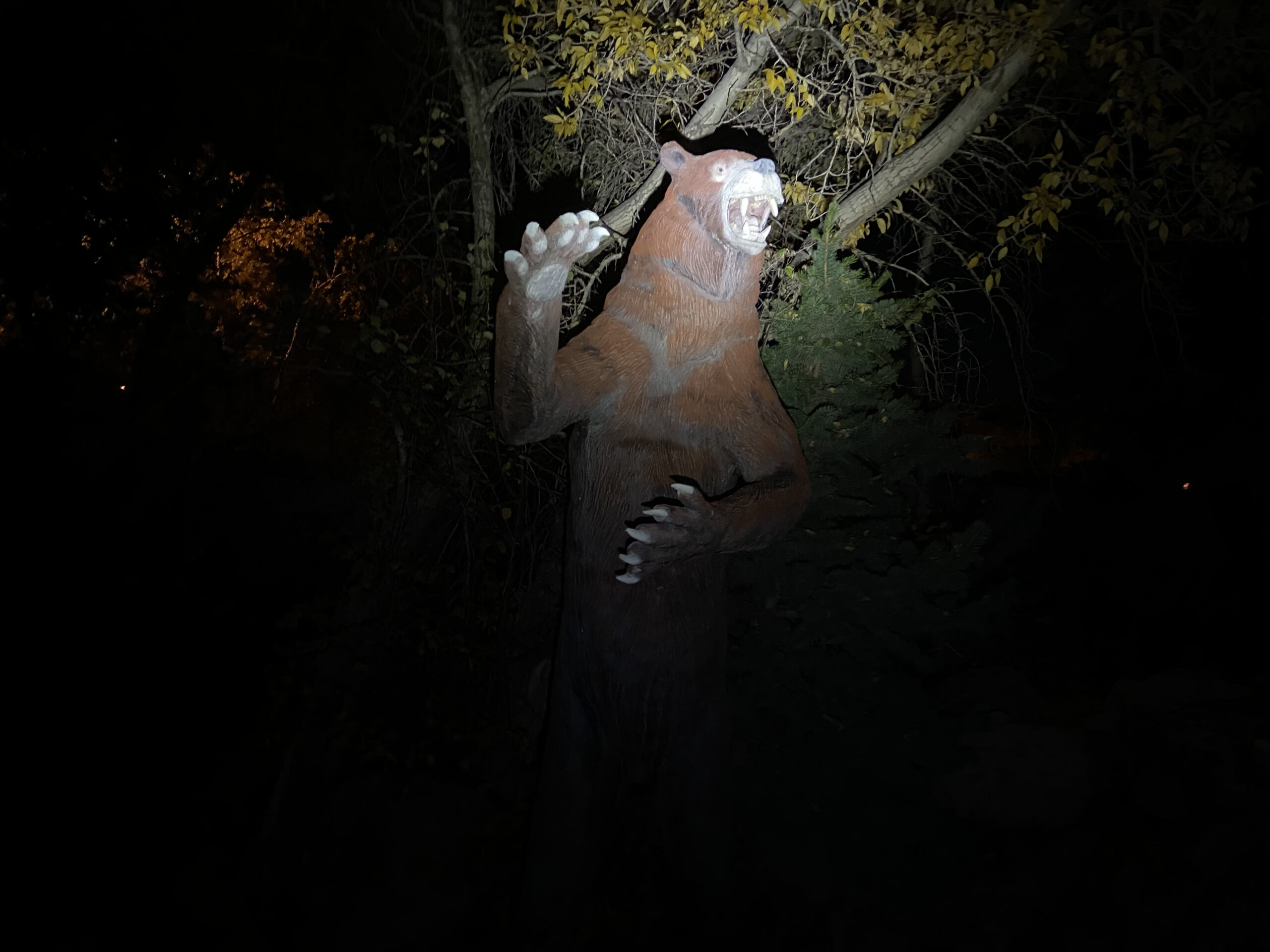
Species: pristinus, simus
Range: Quaternary (Pleistocene-Holocene, 2 MYA to 10,000 YA) from North America
Size estimate: 6 ft high at shoulder (8-12 feet tall when standing), 1 ton
Discovery: Joseph Leidy, 1854
Classification: mammalia, carnivora, ursidae, tremarctinae
Since no one has ever seen a living dinosaur, and the missing pieces of the fossil record withhold important clues to their appearance, no artistic representation of a dinosaur ever gets it 100% right. On top of that, new discoveries can change our ideas of extinct creatures drastically. So, how close does this sculpture come to what we know of the original animal?
© 2023 Dinosaur Park • All Rights Reserved.